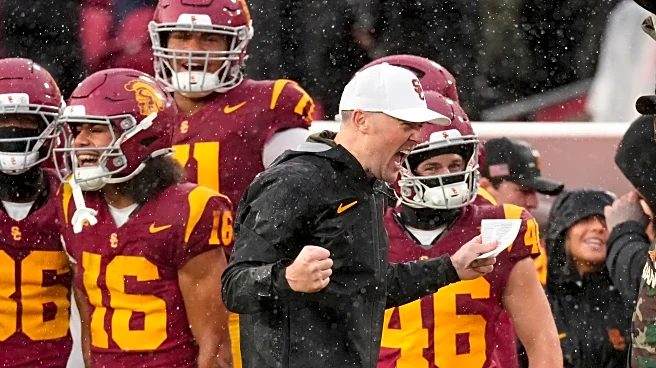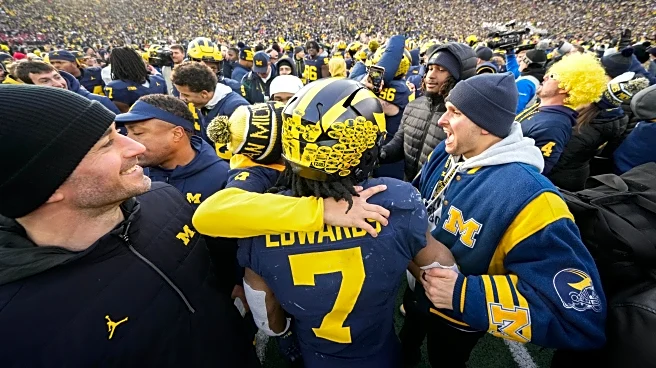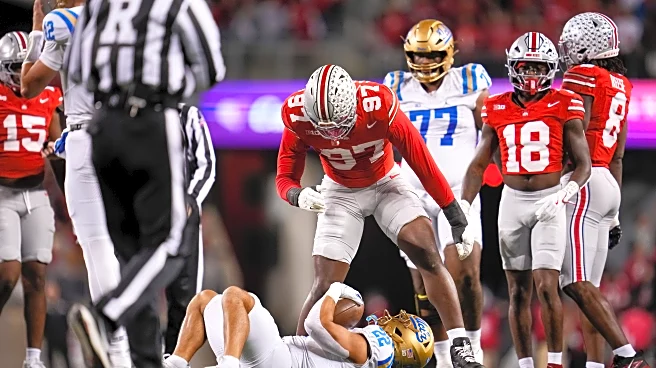What's Happening?
The National Blue Ribbon Schools program, which recognized schools for academic excellence and achievement gap narrowing, was ended by President Trump's administration in 2025. This decision was made in the
spirit of returning education control to the states, according to a federal education official. The program had been instrumental for over four decades in helping schools gain national recognition, fundraising opportunities, and attracting top teaching talent. In response to the program's cancellation, at least 18 states, including Indiana, Iowa, Michigan, and North Carolina, have initiated their own recognition programs to continue honoring exemplary schools. These state programs aim to fill the void left by the federal program, although they may not offer the same networking and fundraising opportunities.
Why It's Important?
The termination of the National Blue Ribbon Schools program marks a significant shift in educational policy, emphasizing state control over federal oversight. This change could impact schools' ability to attract high-quality teachers and secure funding, particularly in rural areas where resources are scarce. The program's end may also affect schools' national recognition, which has been a valuable tool for improving educational standards and bridging achievement gaps. The move reflects broader trends in the U.S. Department of Education's efforts to reduce its scope and influence, potentially leading to varied educational standards and opportunities across states.
What's Next?
States are expected to continue developing their own versions of the Blue Ribbon program, with some already honoring schools that would have been recognized by the federal program. These state initiatives may evolve to include networking opportunities and funding mechanisms similar to those offered by the national program. Schools and educators will need to adapt to these changes, potentially seeking new ways to achieve recognition and attract resources. The long-term impact on educational quality and equity remains to be seen as states implement their programs.













